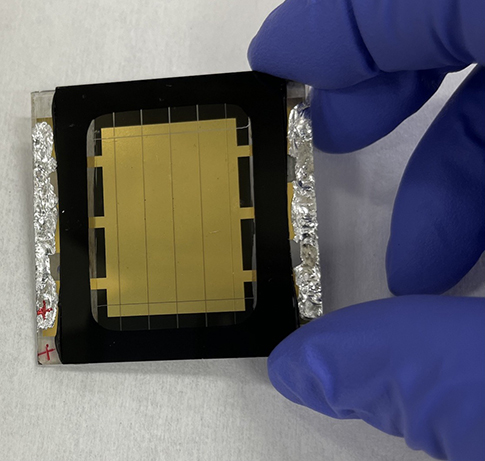NREL-Led Research Effort Adds Salt, Boosts Performance of Perovskites
Using an ionic salt to replace the fullerene layer in perovskite solar cells boosted their performance, efficiency, and durability, according to a global research effort led by scientists at the National Renewable Energy Laboratory (NREL).

Their findings appear in the journal Science.
The researchers said their findings point to a promising approach to advancing perovskite photovoltaic technologies toward commercialization. Perovskites refers to a crystalline structure that has proven highly efficient as a semiconductor material for absorbing sunlight. Work continues to improve the long-term stability of perovskite solar cells.
Kai Zhu, a senior scientist at NREL and an architect of the research effort, said improvements involved changing the chemical composition of the electron transport layer in the perovskite solar cell. This layer is essential as it moves electrons triggered by sunlight through the cell, thereby generating electricity. The fullerene C60 is commonly used for the electron transport layer in inverted perovskite solar cells, but its molecular nature leads to a weak interface and limits the performance of the device. That is especially a problem with long-term stability.
The researchers experimented with adding acids and chemical compounds that reacted with C60 to form an ionic salt referred to as CPMAC. The change resulted in a three-fold increase in the mechanical strength of the electron transport layer of the cell, which is crucial for long-term stability and durability.
“That’s really the surprise, but it's a very good surprise,” Zhu said.
The inverted architecture of the perovskite solar cell refers to how the layers are deposited on the glass substrate. This construction is known for its high stability and integration into tandem solar cells.
The research at NREL was supported in part by the Center for Hybrid Organic-Inorganic Semiconductors for Energy (CHOISE), an Energy Frontier Research Center funded by the U.S. Department of Energy’s Office of Basic Energy Sciences and the Solar Energy Technologies Office. The research reported the initial lab efficiency of the perovskite cells that used the ionic salt was 26.1%, vs. 25.5% for the C60 version.
Using the CPMAC, the researchers obtained a 26% lab efficiency with about 2% degradation after 2,100 hours of operation at 65 degrees Celsius, and a 25.5% efficiency with about 5% degradation after 1,500 hours of operation at 85 degrees Celsius. For a minimodule made up of four subcells, six square centimeters, the lab efficiency was 23% with less than a 9% degradation after 2,200 hours of operation at 55 degrees Celsius.
The paper is “C60-based ionic salt electron shuttle for high-performance inverted perovskite solar modules.” Other co-authors from NREL are Shuai You, Yifan Dong, Lei Chen, Matthew Beard, and Joseph Berry. Researchers who contributed to the work hailed from King Abdullah University of Science and Technology (Saudi Arabia) and Newcastle University (United Kingdom) in addition to CubicPV Inc., the University of Colorado Boulder, Arizona State University, and the University of Toledo.

